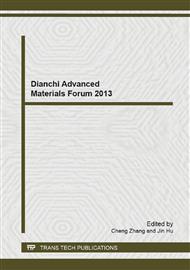p.286
p.291
p.295
p.301
p.305
p.310
p.317
p.322
p.326
Preparation, Structure and Properties of FeCrAl Honeycombs
Abstract:
FeCrAl alloy powder is used to mix with an additive to prepare a powder mixed paste. FeCrAl alloy honeycombs are fabricated by extruding the powder mixed paste, then dried and sintered. While sintering at 1200°C, with sintering time increase, the volume of sintered honeycombs increase and density decrease. The structure parameters and properties of sintered honeycombs were obtained by measuring and calculating. Results show that wall thickness 0.18~0.23mm, cell number (1/in2) 316~339, clear cross section (%) 69~74, specific surface Sv (sq m/cu dm)2.35~2.52; specific heat capacity Cp(J/g.K) 0.60~0.70, heat conductivity κ (W/m.K) 6.52~6.78. SEM/XRD analysis shows that a large number of oxides formed on the surface of sintered honeycombs during sintering, such as Fe2Cr204, Fe2Si04, Al2O3.These oxides connect together to form film on surface of sintered honeycombs. By impregnating and baking test, the surface of sintered honeycomb can firmly adhere γ-Al2O3 catalytic washcoat. The oxide film formed on the surface sintered honeycombs is benefit for adhering and supporting the catalytic active components.
Info:
Periodical:
Pages:
305-309
Citation:
Online since:
November 2013
Keywords:
Price:
Сopyright:
© 2014 Trans Tech Publications Ltd. All Rights Reserved
Share:
Citation:


